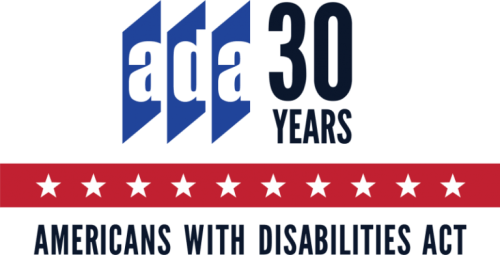UW committed to accessibility as nation marks 30 years of Americans with Disabilities Act
The Americans With Disabilities Act — a hallmark law that has had an undeniable impact on access and inclusion at UW–Madison — turns 30 years old this month, and is more critical than ever as the university expands its digital campus due to the challenges presented by COVID-19.
President George H.W. Bush signed the ADA on July 26, 1990, validating the rights of persons with disabilities in all areas of public life. This legislation, which affirms that no qualified individual with a disability be denied access to or participation in services, programs and activities, is the foundation for UW–Madison’s efforts to create an inclusive campus experience for students, employees and visitors with disabilities.
 The UW has a rich history of providing disability access dating back to the arrival of World War II veterans attending classes via the GI Bill. Today, as many of us interact with the university from afar and on-screen, disability-focused campus units forge ahead in ensuring the tenets of the ADA are observed. These units are integral to the campus’s commitment to the ADA, but they are only one component. For a glimpse into additional programs not mentioned here, visit Accessibility at UW–Madison.
The UW has a rich history of providing disability access dating back to the arrival of World War II veterans attending classes via the GI Bill. Today, as many of us interact with the university from afar and on-screen, disability-focused campus units forge ahead in ensuring the tenets of the ADA are observed. These units are integral to the campus’s commitment to the ADA, but they are only one component. For a glimpse into additional programs not mentioned here, visit Accessibility at UW–Madison.
UW–Madison’s adherence to the ADA is overseen by the campus ADA coordinator in the Office of Compliance. In January, the ADA coordinator became a full-time position solely dedicated to disability compliance and access. The coordinator, in addition to developing policies and reviewing accommodation appeals, assists with visitor and guest accommodation requests. Since March, the ADA Coordinator has been monitoring local and federal updates about the pandemic and reviewing how those updates apply to campus obligations and plans for reopening.
Founded 13 years before the ADA became law, the McBurney Disability Resource Center serves students with academic, housing, digital and physical accessibility. When campus quickly transitioned to remote instruction in late March, McBurney Center staff made adjustments to ensure remote learning was accessible. Currently, the McBurney Center is working with students to address impacts COVID-19 is having on class instruction formats, shifting course times, and classroom changes.
Historic UW buildings and the campus’s scenic terrain inadvertently present accessibility challenges. The Division of Facilities Planning and Management (FP&M) and the Facilities Access Specialist coordinate building and site plans for accessible code compliance, and also assist facility managers in addressing accessibility concerns such as building entrances, lighting and furniture. FP&M offers a Disability Resource Guide that provides details on accessible pedestrian routes, elevator access and snow removal. The need for physical distancing poses a unique challenge to reconfigure spaces that follow public health guidance while also providing accessible furnishings and navigation for individuals with disabilities.
As we await the modified reopening of campus, the Employee Disability Resources Office, founded in 1990, has been monitoring federal and local guidance surrounding COVID-19, and updating and training the campus network of Divisional Disability Representatives. This office serves as the campuswide hub for information on employee and job applicant accommodations and has been busy responding to pandemic-related requests, along with ensuring reasonable accommodations are provided in remote work locations.
The pandemic highlights the importance of our digital campus infrastructure and how the use of technology can facilitate remote learning and working, provided that it is accessible. UW–Madison was an early promoter of web accessibility. The Center for User Experience, created in 2018, partners with colleagues across the university to design a more accessible and usable digital campus across an ever-expanding portfolio of digital content and technology. The center publishes “Make it accessible” guides for creating accessible documents, emails, video and audio content, web content and websites. The center was instrumental in providing guidance for the Spring 2020 instructional continuity initiative when most in-person classes were replaced with remote learning.
It is often said that attitudes construct “disability.” In the next 30 years, we hold hope that campus reliance on the legal necessity of the ADA decreases, while campus courses, programs, workplaces and events are increasingly designed to reduce barriers for everyone. Celebrating 30 years of the ADA gives us great opportunity to fully realize our collective ability to create a maximally inclusive, inherently accessible campus as we continue to honor diversity within our campus community.
Barbara Lanser joined UW–Madison in 2006 as director of the Employee Disability Resources Office and has worked with individuals with disabilities since 1985.
Mari Magler joined UW–Madison in 2016 as assistant dean and director of the McBurney Disability Resource Center.
Ruben Mota is the campus ADA Coordinator. He joined UW–Madison in 2013.
Top Tantivivat is a UW alum serving as facilities access specialist for campus since 2009.
Phyllis Treige leads the Center for User Experience. She joined UW–Madison in 2000.
Tags: students



